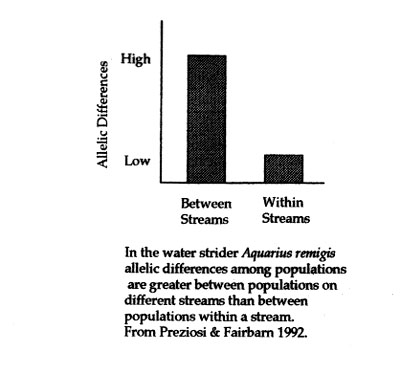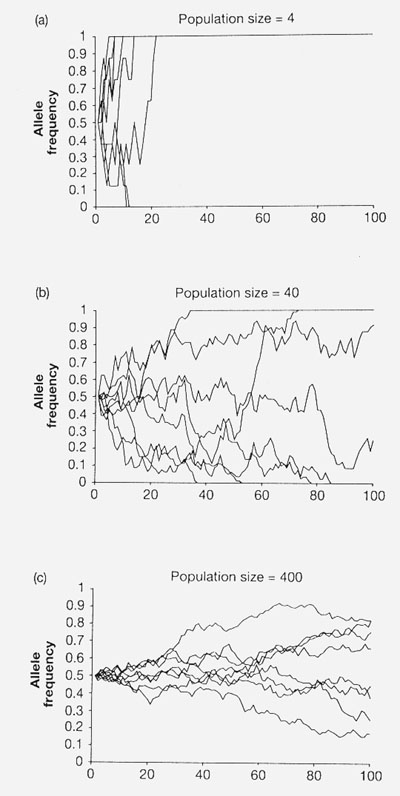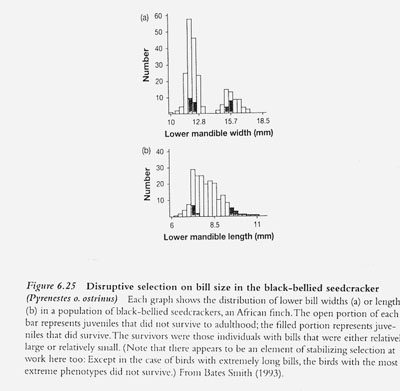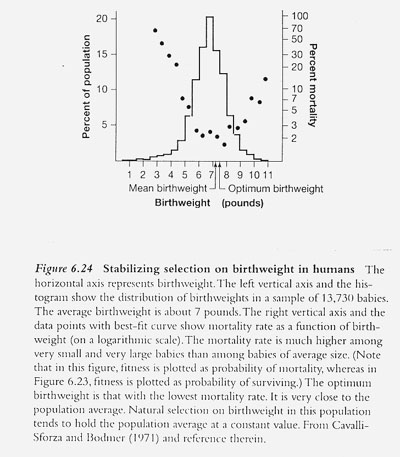
Agents of Evolution
I. The four agents of evolutionary change.
A. Forces that create new variants
1. Mutation
2. Gene flow (migration)
B. Forces that lead to biased transmission of alleles between generations
1. Genetic drift
2. Natural selection
II. How important is each of these forces on evolutionary change and what effect
does each agent have on genetic variation.
A. Mutation
1. Mutations are the ultimate source of variants.
2. Rates are very small.
3. Change in allele frequency over time depends on mutation rate of A----> a.
a. We can derive a general equation for what the allele frequency will be in generation
t with mutation rate m.
Gen Freq of A
0 p0
1 p1= p0 - p0m = p0(1-m)
2 p2 = p1 - p1m = p1(1-m) = p0(1-m)2
t pt = p0(1-m)t
b. How many generations it would take for the frequency of A to change by 1%.
pt/p0 = 0.99 = (1-m)t, if m 10-4, t = 100 gen; if m=10-6; t = 10,000 gen
c. By itself, mutation isnot a powerful mode of change in terms of how quickly it
can produce.
B. Gene flow.
1. Gene flow is the migration of alleles among populations
2. Migrants must reproduce in order evolutionary change to occur in subsequent generations.
3. Gene flow has a homogenizing effect, making populations more similar to each other
(Ex. Allelic diffferences of water striders between and within streams.)
4. Homogenizing effect of gene flow can counteract selection by continually introducing
alleles that are not favored by selection. (Ex. Water snakes that occur in Lake.)
5. Gene flow can increase genetic variation by introducing new alleles into a population
or maintain existing variation by introducing existing alleles into a population.


C. Genetic drift
1. When genetic drift operates in a population, allele frequencies change due to
sampling error.
2. Sampling error is most pronounced when population size is small.
3. Compute simulations can help us understand how genetic drift operates in populations
of different sizes.
a. When n very small alleles fixed or lost very quickly compared to when population
size large.
b. Different populations have different outcomes--if looking at many alleles, different
populations will have different alleles fixed or lost.
c. When no other evolutionary force is operating, drift will alter allele frequencies
even in large populations.

4. Drift relatively unimportant in large populations if selection or gene flow is
operating. For example, minimal gene flow of 1 migrant per generation can circumvent
genetic drift.
5. Within a given population, drift decreases genetic variation.
D. Natural selection can favor extremes or intermediate phenotypes. particular phenotype
from the extremes
1. Directional selection occurs when individuals with traits from one extreme of
the distribution are favored. (Ex. Artificial selection for oil content in corn.).
Direction selection decreases genetic variation.

2. When individuals from both extremes are favored, but intermediates are selected
against, we describe this as disruptive selection. (Ex. Bill width and length in
Black bellied seedcrackers.) Disruptive selection maintains existing genetic variation.

3. Stabilizing selection refers to selection for intermediate traits favored.
a. For polygenic traits (ex. Birth weight in humans), stabilizing selection results
in a decrease in genetic variation.

b. For single locus trait (ex. Persistence of allele for sickle-cell anemia in
malaria infested areas), stabilizing selection results in the maintenance of genetic
variation.
